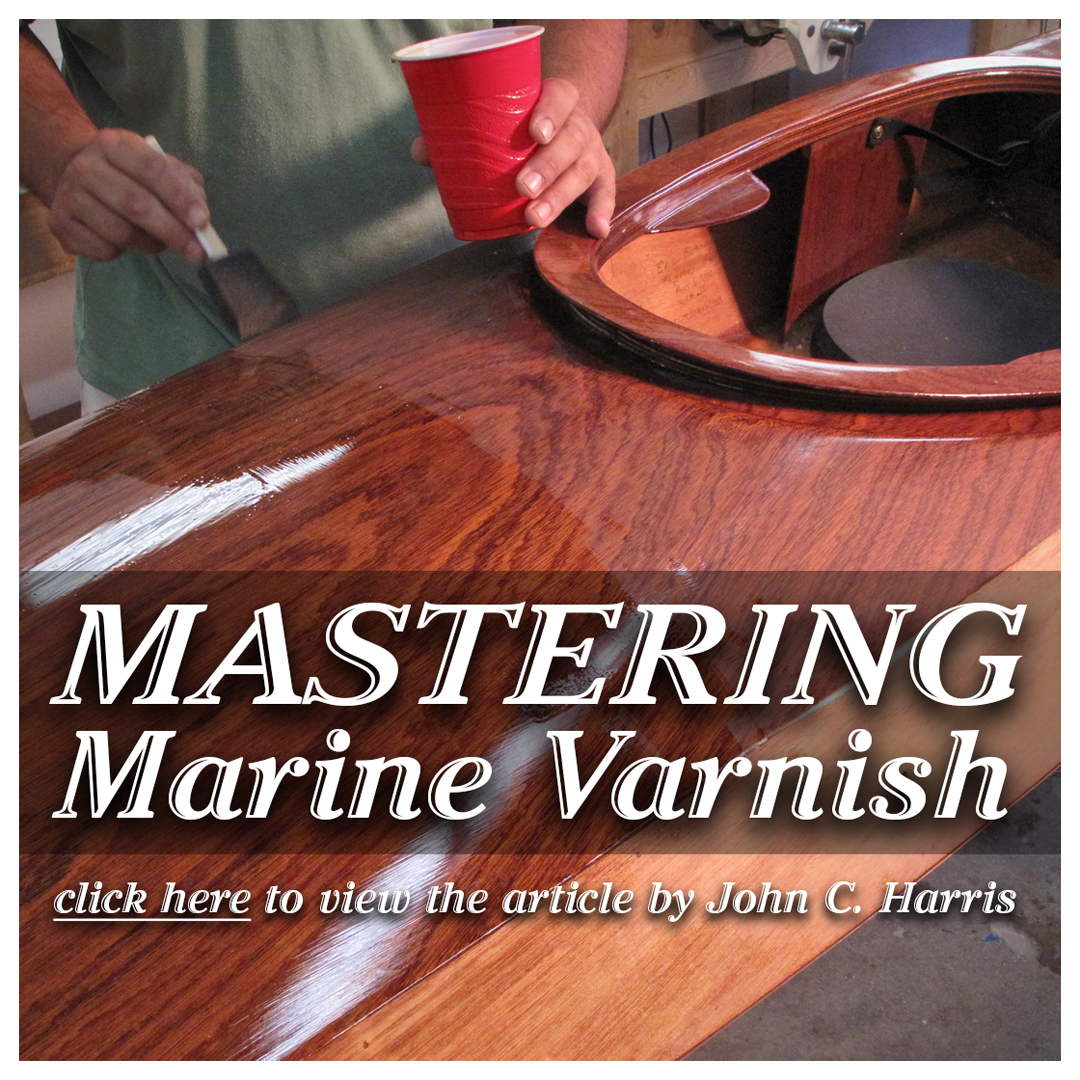Builders' Forum |
|
| ↓ Scroll to Last Comment ↓ | Forum Guidelines | Builders' Forum | |
Glue Drying Time for a Strip Night Heron
I've put five strips on my Night Heron, and I have been waiting at least 24 or more hours for the glue to dry, but I'm getting bored waiting for the time to pass to the 24 hour mark.
I am using Original Titebond wood glue for this build, and I would like some advice on acceptable clamping/drying times before putting on the next strip. Advice from experienced builders would be greatly appreciated. Any ideas?
Also, I have some areas between the cove and bead that don't seem to squeeze out any glue to make it visible, and then I apply some glue to these areas to dry later, is this ok?
Thanks in advance,
Chris F
6 replies:
RE: Glue Drying Time for a Strip Night Heron
What Pat said.
And if you do need to fill gaps use thickened epoxy.
Dan
RE: Glue Drying Time for a Strip Night Heron
Chris,
I use Titebond and it works great. The time it takes to set up depends a lot on the humidity in the work shop. At 65%, clamp time is about 30 minutes. If the humidity is more then 90%, it takes hours and hours to set up.
I use a dehumidifier in my workshop in the summer time.
Lou
RE: Glue Drying Time for a Strip Night Heron
Humidity here is about 60% with the daytime temps in the 80's.
Whenever I glue a new strip into place, I first put a bead of glue in the cove, run my finger over the glue to allow it to cover the entire cove, and then I'm ready to put the new strip into place.
I then put the bead of the strip into the cove and clamp the two pieces together. I use little c-clamps similar to what we see Nick use in his videos, and clamp these into place with spring clamps. Glue seems to squeeze out in many places, but not over the entire length of the strip.
I then use Frog tape (the green painters tape) to help clamp down the strips in areas between the forms, and more glues seems to squeeze out, but still not over the entire strip. After this, I then wipe down some of the squeezed out glue with a wet cloth before it sets.
I leave the strips clamped and taped together for 24 hours, and then I take off the clamps and tape, scrap off glue drips on the inside and outside of the strips.
The parts of the strips that don't have glue squeezed out are very slight, but I'm sure they have glue in them, but not so much that it comes running out when clamped.
If these little gaps are not filled with glue to the point of visible squeezed out glue, should they really be filled with thickened epoxy now...?
This is only the 5th strip on the gunwall. When I pull at the strips, they do not move. I thought the glue was only to hold the strips in place, and the strength comes from the epoxy and fiber glass.
Am I missing something?
Now I'm getting nervous...but still patient...maybe...sort of...!
RE: Glue Drying Time for a Strip Night Heron
Hi Chris,
Sounds like you are doing it correctly and not missing anything. I have been using Titebond II, and it seems to set up in 15 minutes or so. I usually do one strip, clamp, move to the other side, clamp and return to the 1st side and remove the clamps for the next strip. The glue is to hold the strips to each other, and staples, brads, or hot glue is used to hold the strips to the forms. Hope this helps.
Barry
RE: Glue Drying Time for a Strip Night Heron
Hi Chris,
Like Barry said, you are doing it right. The glue just holds the strips into place until you glass the hull. Small gaps with no glue will fill with epoxy when you glass. Large gaps of more than a 1/16 of an inch will need thickened epoxy before you do the glass.
Sound to me like you are doing a great job !!!
Any photos ?
Lou













RE: Glue Drying Time for a Strip Night Heron
» Submitted by TwoRivers - Sat, 6/4/11 » 6:48 PM
Chris,
Clamp time is 30 minutes, which already is an eternity in my book. If you're using staples, you don't even have to wait that long. If you're not getting consistent squeeze-out, and you have gaps, filling the gaps with glue is not the recommended approach. Better/more clamping is what you need.
Cheers,
Pat